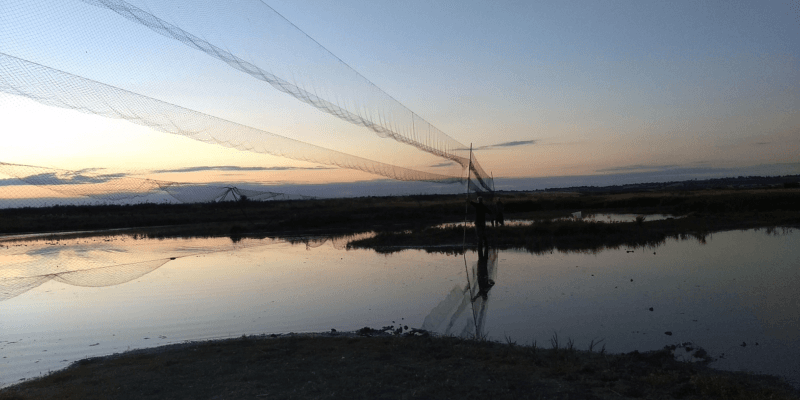- 24/07/2020
- Nature Notes
A team of volunteers assembled on the Reserve at dusk on the 21st of July with the aim of catching and ringing wading birds under licence from the British Trust for Ornotholgy (BTO).
Share this:
Waders are often caught in mist nests at night when a high tide covers the mud on which they feed and they head inland to roost whilst they await the falling tide. Conditions were good with a small moon and little wind meaning the visibility of the nets was low. A total of 37 birds were ringed with the highlights being seven curlew, 4 black-tailed godwit (which were given individuals colour ring combinations), 1 bar-tailed godwit, and a single spotted redshank.
Ringing is a valuable tool for assessing the movements, longevity, and behaviour of these charismatic species. It also helps us learn more about the value of sites, such as the Swale, to migratory and resident birds in order to conserve their populations.
Catch totals for each species below:
Species Count
Spotted Redshank 1
Curlew 7
Black-tailed godwit 4
Black-headed Gull 9
Oystercatcher 6
Bar-tailed godwit 1
Whimbrel 2
Ringed Plover 1
Dunlin 3
Spotted redshank in the hand. This long-legged species is rarely caught in the UK with only 28 being caught between 2002 and 2018. A spotted redshank hasn’t been caught on the Swale since 1969, though they are sporadically seen throughout the late summer at Elmley and other reserves such as Oare marshes.
Mist nets were set over the pools at the Wellmarsh hide and on the saltmarsh on the Swale side of the sea wall.
Many thanks to GWCT scientists Lizzie Grayshon and Ryan Burrell and the Swale Wader Group.
Images: Spotted Redshank ©Will Connock, Mist nets ©Brian Watmough

